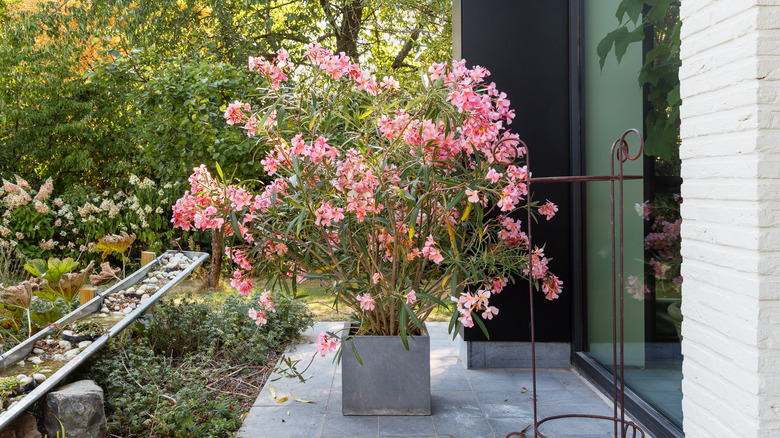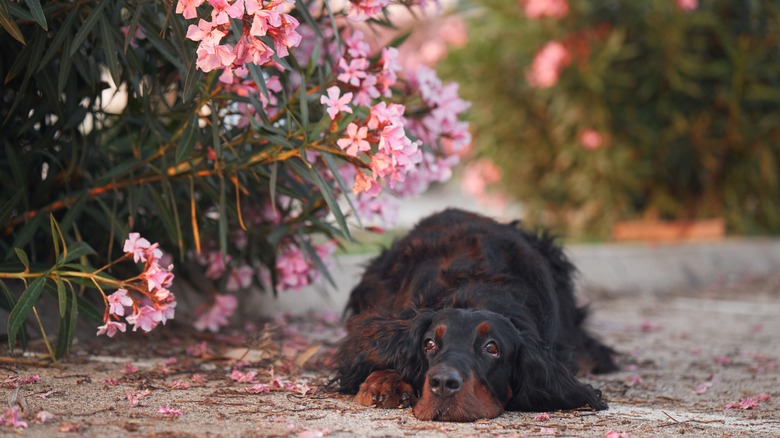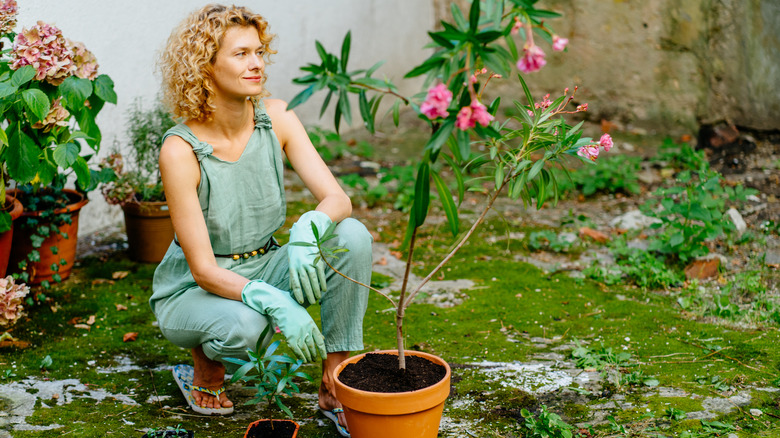Mistakes Everyone Makes When Growing Oleander Plants
As an easy houseplant anyone can keep alive, oleander (Nerium oleander) seems like a great addition to any home or garden. Since it can survive in dry and coastal climates, many people forget that there are blunders you must avoid if you want it to survive. The main mistakes everyone makes when growing oleander plants are ignoring safety measures, overwatering, overfertilizing, and transitioning houseplants outdoors too quickly.
There are many wonderful aspects about the oleander plant. Its USDA hardiness zones are 8 through 11, and it's known for its salt and pollution tolerance, which works great for coastal areas, roadsides, and city landscaping. It has beautiful flowers that come in white, yellow, peach, red, and pink, making it a great statement piece in a yard. However, don't be fooled by its beauty. Oleander has been reported as invasive in parts of California, Nevada, Utah, Arizona, New Mexico, Texas, Louisiana, Mississippi, Alabama, Florida, Georgia, and South Carolina. It is also poisonous, often causing you more problems than good. Therefore, it is important that you practice proper safety and care routines.
Never ignore safety measures with oleander plants
You should never ignore the safety protocols that come with handling oleander. It is a houseplant you should never grow in a home with pets or children. This plant is extremely toxic if eaten, exposed to skin, or the smoke from burning it is inhaled. If humans or animals consume the flowers, stems, leaves, or twigs, it can cause many symptoms ranging from vomiting and diarrhea to heart issues and even death. Any living thing that has eaten part of an oleander plant needs immediate medical attention. Symptoms last up to a few days after medical help, but most animals and people make a full recovery.
When dealing with this beautiful plant, it is best to wear gloves to protect your skin from irritations and allergic reactions. If you do touch an oleander plant, wash your hands immediately and don't touch your eyes, nose, or mouth since the poison can enter your body through these openings. Contact poison control or visit a doctor if symptoms occur. Do not burn these plant clippings since the smoke is toxic, as well. If you plan on removing an oleander plant, you will need to dispose of the entire root system. Since these beauties can root in the tiniest of crevices, it takes a lot of work and may need chemical intervention and professional gardening tools. To remain safe, it is best to consult with a professional landscaper or cleaning crew for removal.
Do not overwater or overfertilize, and transition oleander slowly
While you may generally look at how to grow and care for oleander plants, many people forget that there are some maintenance routines, like not overwatering or overfertilizing as well as proper transitioning periods that you need to follow for this living thing to thrive. These plants don't require too much water, so if you notice the leaves turning yellow, cut back on your watering schedule.
In the spring and early fall, you might be tempted to add a fertilizer. But be wary; oleander is susceptible to overfertilizing, and you should only do so if the plant needs a boost. If your plant begins to wilt or turn brown, stop fertilizing immediately. During the early fall months, remove dead foliage and growth as well as trim away any overcrowding on the plant.
Keep oleander in a container to simplify the process of transitioning it throughout the year. You'll also want to ensure that the pot is big enough to support its complicated root system. Transitioning your oleander in and out of the house slowly is important to prevent shock from the climate change. Since it does well under the sun, leave it outside all summer long. During late fall or once temperatures consistently dip below 55 degrees Fahrenheit, you need to bring your oleander plant inside. Transition it for winter by reducing its outdoor time and increasing indoor exposure for a few hours day by day and vice versa when moving it back outside for summer.


